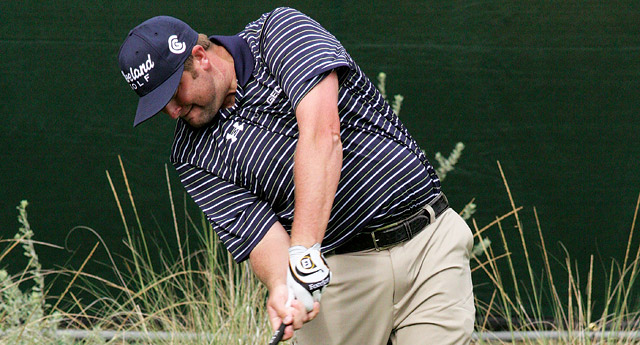
While there is absolutely nothing wrong with keeping a few fish for table fare or using some as bait, catch and release is the practice that will help sustain fish populations for generations to come. Stewardship used in our fisheries is paramount to the success of sustaining this valuable resource. An important part of these management assets is releasing a high percentage of the fish you catch. Without responsible fishermen practicing this concept, our fish populations will diminish. Therefore, I encourage every angler to learn and incorporate these practices into their fishing routine.
There isn't anything wrong with having bragging rights about the one that you actually caught because it is only natural to feel proud about the one that didn't get away. CPR in anglingmeans Catch Photograph and Release of your catch and is a practice that is growing in popularity. It is a special moment when two people can share the same fish as their personal best because of catch and release.
Choose Your Fishing Area Wisely
There is definitely an art to handling the part of your catch that you intend to set free. An important item to consider is where you are going to cast your line so choose your spots with ease of access to the water in mind. Picking an area with no consideration of how and where to release your catch will mean anything caught during that outing will die when released. You would not want to drop the fish 20 feet from a bridge because it will not survive the shock. I employ the use of a drop net when fishing from that type of area because if the fish is going to be released it can be placed in the net and lowered back into the water. Then after the net is lowered your catch can swim away unharmed. Bank areas should be chosen carefully too trying to avoid places where there are rock piles along the bank. This kind of place makes it nearly impossible to release your catch without it sustaining an injury. The ideal spot is one where you can kneel down and lower your catch into the water.
Water temperatures are important for catch and release angling because as the water warms the oxygen level decreases. This stresses your quarry faster which makes their mortality rate higher and this is especially true with cold water fish such as trout. Therefore you should seriously consider not going fishing if the water temperature is higher than 80 degrees. The percentage of fish that would die after being caught is very high in these warm water conditions.
A Time Sensitive Situation
Reducing the amount of time that you battle the fish is important because lactose acid forms during the fight with each second adding more. There is no set time for this to happen because the amount of lactose acid each individual fish can handle is different. Therefore a small amount of time before releasing your catch will yield a better survival rate.
Thoughts About Your Tackle
Single hooks do less damage to your catch than their double and treble hook counterparts. Therefore, treble hooks on lures should be replaced with single hooks when employing catch and release angling. This will cause less stress on the fish that you intend to release. Circle hooks are a wise decision when choosing what tackle to use. Even if the hook is swallowed, it will not penetrate flesh until it is in the corner of the fish's mouth. Circle hooks have been in use for more than 15 years and have proven to be a valuable asset among catch and release anglers. When angling without using circle hooks you should set the hook quickly to diminish the chances of your quarry becoming gut hooked. Fish that are gut hooked have a much higher mortality rate than those hooked with circle hooks in the corner of the mouth.
A Small Barb Makes A Big Difference
Hooks void of barbs will allow your fish to be unhooked without any damage done to their mouths. Barbs are those small protrusions that stick out about 60 degrees from the hook's point. Anyone who has been angling for any amount of time has hooked themselves and hooks without a barb are easily removed with minor damage done to the angler. Therefore, this is another good reason to use barbless hooks. Barbs can simply be pinched down with a pair of pliers making the hook barbless. You might think this would cause you to lose more fish but I have found that there is really not a difference in the amount of fish lost using this tackle as long as you maintain constant pressure during the battle.
Slime Is Important On A Fish
Before handling the prize that you wish to set free, wet your hands. Fish have a protective coating on them, so by wetting your hands it aids in the fish keeping their protective slime in tact while being handled. The best case scenario is to not handle your catch during the release process. You can accomplished this by grasping the hook with a pair of pliers, then while the tail of the fish is still in the water shake the hook. By doing this you will release the fish without removing it from the water and all of the protective slime will remain in tact. The fish will also be under less stress during this process.
Proper Tools For Hook Removal
Needle nose pliers make the job of removing hooks easier than by using just your hands. It cannot be emphasized enough that touching fish should be kept to a minimum. Hemostats and hook removers can be used in the same manner as the pliers. In carp angling a padded mat is used to handle the specimen which eliminates damage to a thrashing fish.
What To Do If The Hook Has Been Swallowed
I have caught a few fish in my lifetime that have had the hook deeply embedded in their stomachs. This proves that fish caught in that situation can sometimes survive although it is rare. Trout is one species that has nearly a 100% mortality rate when they are hooked deeply. In any other fish if the hook appears to be through cartilage just cut the line at the mouth of the fish. After a short period of time the hook will rust out and the fish will be in great shape. Naturally this occurs much faster with saltwater fish than it does in freshwater.
In Conclusion
The best short piece of advice that I can give you is to treat a fish being released like a time sensitive piece of merchandise. The time used to battle your quarry should be short and handling the fish for taking photographs should be kept to a minimum also. Return the fish to the water quickly as possible after unhooking it. Catch and release does work so please remember that it is the responsibility of all anglers to ensure there will be a fish population for future generations.

Ping G25 Driver is a bomber with a buttery feel


Copyright © www.mycheapnfljerseys.com Outdoor sports All Rights Reserved